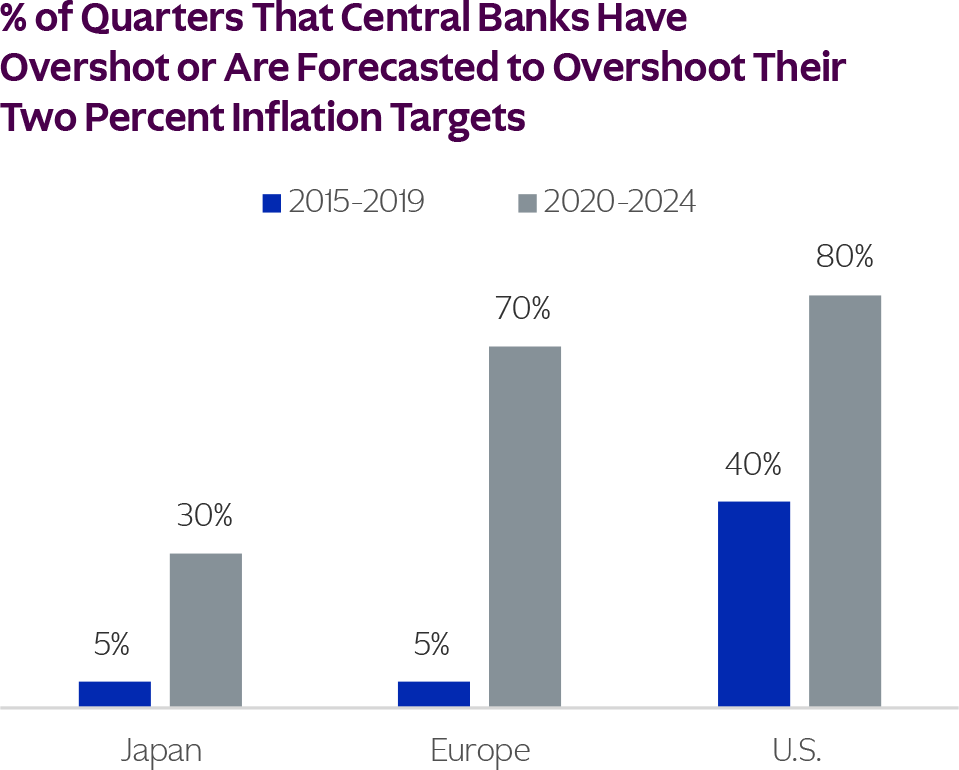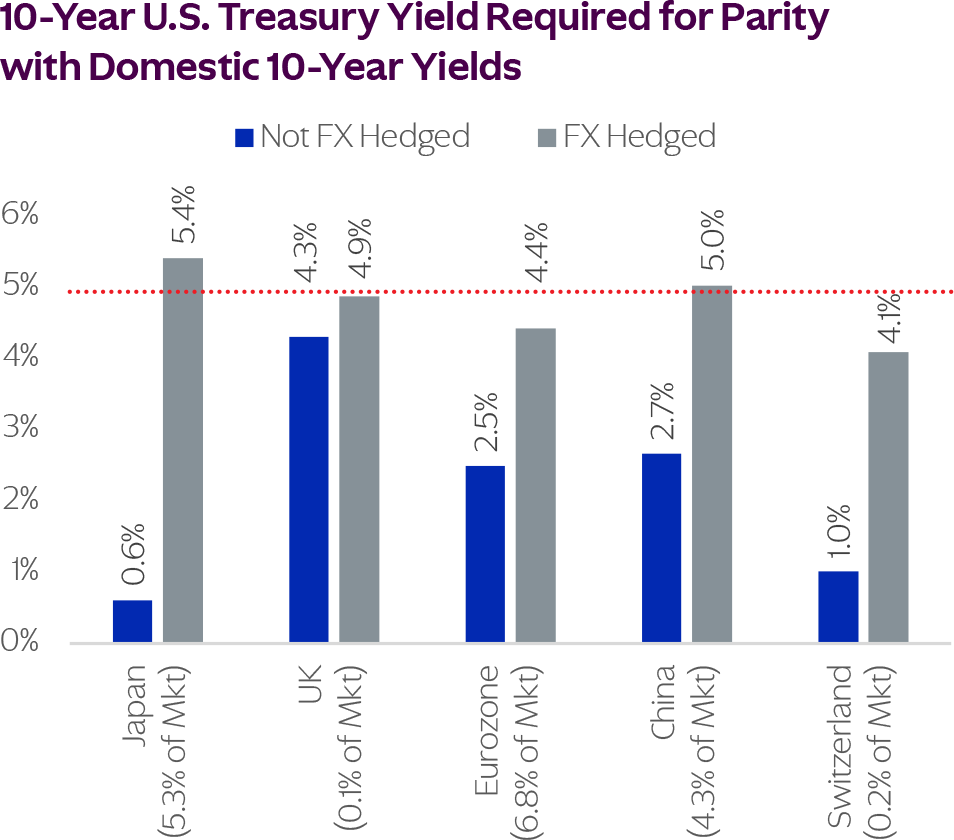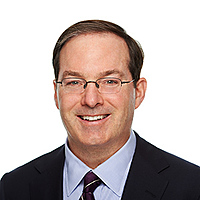The changing role of Private Real Assets in the ‘traditional’ portfolio
Against the current macroeconomic backdrop of ongoing fiscal stimulus, labour shortages, a global energy transition, and heightened geopolitics, we continue to envision a ‘higher resting heart rate’ for inflation relative to the prior cycle in many developed markets.
In this environment we believe stocks and bonds are becoming more correlated, an important structural change for asset allocation. This Regime Change, as we like to call it at KKR, likely means that bonds, in our view, can no longer act as effective portfolio ‘shock absorbers.’ As such, we continue to favour Real Assets with defendable margins and upfront recurring yields as a potential substitute to traditional fixed income across many types of portfolios. Importantly, not all Real Assets are created equal, and many of the more ‘traditional’ inflation hedges are not performing as expected. Therefore, we believe that an investor must look beyond REITs, TIPS (Treasury Inflation Protected Securities), and Gold towards more collateral-based cash flows linked to nominal GDP, including a mix of Asset-Based Finance, Infrastructure, and select parts of Real Estate Credit and Equities. Beyond the potentially attractive return profile, we also like the diversification benefits that many Private Real Assets bring to a more traditional portfolio.
"Fortune befriends the bold." - Emily Dickinson, American poet
With inflation starting to subside from near record levels in influential markets such as the United States, some investors might think that now could be the time to begin to pull back on commitments to Real Assets in their portfolios. That view, however, is not one we hold at KKR.
Consistent with our Regime Change thesis, we still see more catalysts ahead that should make Real Assets continue to be important and necessary components of a diversified portfolio.
In the U.S., for example, we think sticky wages will remain an issue, and we do not see capital expenditures falling off as much this cycle, given increased reshoring as well as investment in cybersecurity and the energy transition.
Consistent with our view that this cycle is different, we believe U.S. Real GDP growth will surprise to the upside at 2.4% year-over-year in 2023 versus a current consensus of two percent, and we believe that, while cool beneath the surface, core inflation will remain ‘stickier’ than many investors may think. Specifically, while we forecast 2023 U.S. CPI to be four percent versus consensus of 4.1%, we still expect 2024 inflation to be 2.7% versus the Fed’s target of two percent. Against this backdrop, we have boosted our 2023 year-end 10-year forecast to 4.75% from 4.25% versus a consensus of 3.6%, while our 2024 forecast goes to 4.25% from 3.75% versus a consensus of 3.4%.
EXHIBIT 1: INFLATION WILL LIKELY EXCEED CENTRAL BANKS’ TARGET LEVELS WELL INTO 2024, A BACKDROP THAT IS QUITE DIFFERENT THAN EARLIER PERIODS

EXHIBIT 2: WE ONLY EXPECT AN INCREASED BID FOR TREASURIES IF AND WHEN 10-YEAR TREASURY YIELDS HIT FIVE PERCENT

However, if we are wrong in our outlook and inflation does subside much faster than we think, our portfolio construction analytics suggest that many parts of Real Assets should continue to perform well in a lower inflationary environment. In particular, there is the potential for a higher Sharpe ratio outcome when Alternatives, including Real Assets, are incorporated into a diversified portfolio, relative to the traditional 60/40 mix in a low inflation environment.
So, while the adaptability of Real Assets to perform across many different economic environments is compelling, our base view remains that we have entered into a period of higher, ‘sticky’ inflation that should benefit this asset class more than many others, especially conventional fixed income.
This is an extract from KKR's Regime Change report. To access the full report, click here.
To access KKR's website, click here.

1 topic
1 stock mentioned
1 fund mentioned

